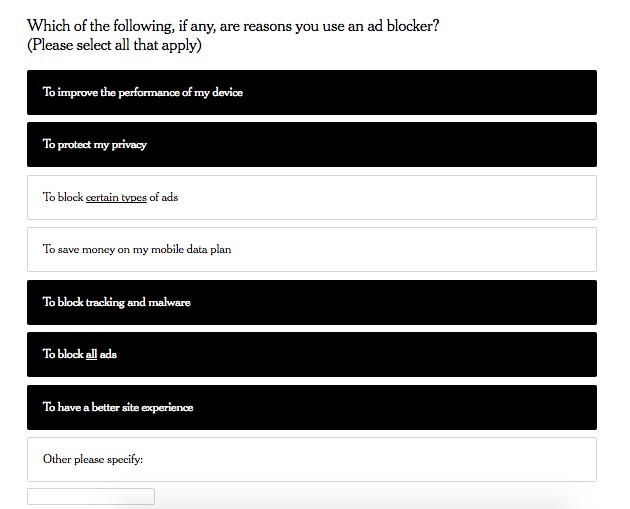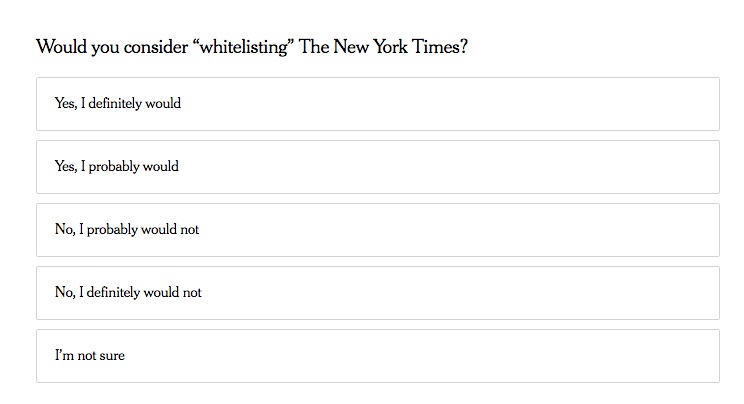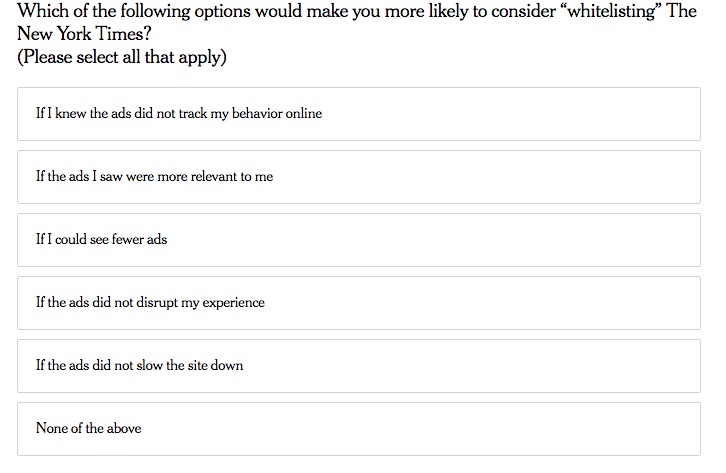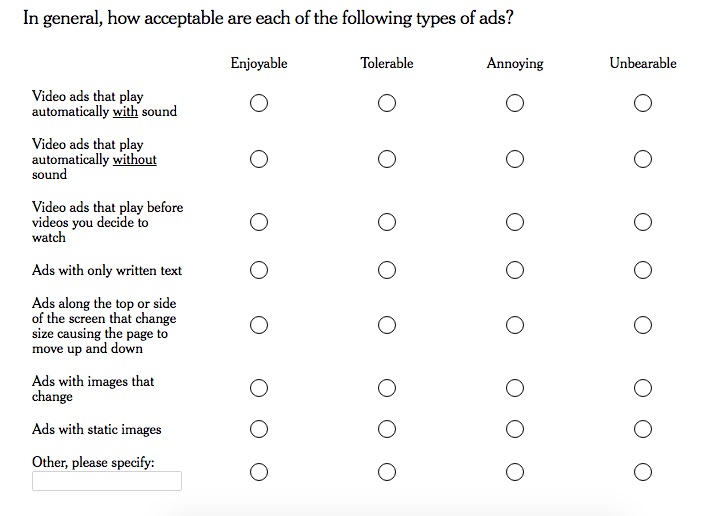
Off the heels of blocking a “relatively small” amount of ad block users from accessing The New York Times’ website, the newspaper is ratcheting up its anti-ad blocking campaign with a massive reader survey.
Digiday first noticed the website’s survey yesterday. The Times told us that the survey is being sent out to 200,000 digital subscribers and 500,000 non-subscribers, all of whom are using an ad blocker.
The survey consists of a dozen questions beginning with broader questions about the user’s ad blocking habits before narrowing to questions specifically about the Times’ website, including if they would consider whitelisting The Times, ranking the most bothersome type of Internet ads and guilting them with questions like: “Are you aware that blocking ads on the website prevents The New York Times from making money to supports it operations?”
Here’s a sampling of the questions:






The survey is only the latest move in the Times’ public stance against ad blockers. In March, it began showing some ad blocker users a pop-up asking to be whitelisted or buy a digital subscription, issuing this statement:
“We are opposed to ad blocking, which does not serve the long term interest of consumers. The creation of quality news content is expensive and digital advertising is one way that The New York Times and other high quality news providers fund news gathering operations.”
Digital subscribers continue to grow for the Times, but digital ad revenue dropped 1 percent to $42 million, a figure that only encompasses about a third of its total ad revenue, according to the paper’s earnings report for the first quarter of 2016.
More in Media

Condé Nast and Hearst strike Amazon AI licensing deals for Rufus
Condé Nast and Hearst have joined the New York Times in signing a licensing deal with Amazon for its AI-powered shopping assistant Rufus.

Media Briefing: AI payouts may be entering a new era
AI compensation is evolving — and new models, not just publisher demands, are driving the shift beyond flat-fee licensing.

In Graphic Detail: AI platforms are driving more traffic — but not enough to offset ‘zero-click’ search
Here are five graphs that reveal the major trends emerging in the world of AI and ‘zero-click’ search, and what it means for publishers.





